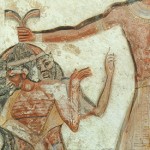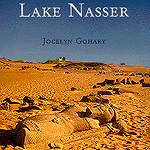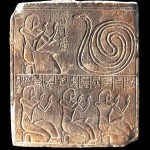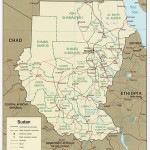
Book Review: Judgement of the Pharaoh
In Judgement of the Pharaohs Tyldesley has tackled a subject that challenges the populist view of Ancient Egypt as a perfect world untroubled by social problems. Tyldesley begins by explaining how she described the idea for her new book to a colleague who said “Crime and punishment in ancient Egypt – surely there wasn’t any?” If an archaeological colleague was so quick to question that perfection of the Egyptian idyll, it is just as well that Tyldesley begins by assuring the reader that there was plenty of crime to be punished. [more…]

Consulting the Oracle
The word oracle derives from the Latin verb orare, to speak. Oracles were common to a number of cultures and are particularly associated with Classical Greece, where oracles were usually living individuals, male or female. In Egypt the oracle was a statue, usually hidden in the centre of the god’s temple, but taken out into the streets on procession during festivals for the public to consult. In either form the purpose of an oracle was to channel the messages of god, giving answers to specific questions. [more…]

Book Review: Guide to the Nubian Monuments on Lake Nasser
This travel guide covers the monuments salvaged during the building of the Aswan High Dam, which were relocated to new higher land to escape the rising waters of Lake Nasser. The most substantial and impressive of these is Abu Simbel, but other sites, like Wadi al-Sebua, the sites at New Kalabsha and the tomb of Pennut are also important and very beautiful. [more…]

Review: HieroPocket 1.0 (iPhone app)
I have been using the iPhone app “HieroPocket” for a few months now, and I thought that for those of you who already own an iPhone or are thinking of buying one it might be useful to summarize its key features. The application is easy to navigate, featuring two main sections – the Dictionary and the Sign List, both available from nice big buttons on the home screen, which has a papyrus-themed background [more…]
Edition - January, 2012

Paneb – “The All Round Bad Guy”
In Joyce Tyldesley’s Judgment of the Pharaohs, Tyldesley makes several references to an individual at Deir el-Medineh named Paneb, whom she describes evocatively as “the all round bad guy” (2000, p.127). In this short article, I have brought together some of the misdemeanours outlined in a letter known as Papyrus Salt 124 (BM 10055) for a closer look at this colourful character. [more…]

The contributions of A.J. Arkell to eastern Saharan prehistory
Abstract
Anthony John Arkell (1898 – 1979) was a pioneer of Sudanese archaeology, a precise and conscientious surveyor and excavator whose publications are still invaluable today. His work provided the framework within which conversations about the prehistory of the Sudan are discussed. When he returned to live and work in England Arkell was responsible for restoring the collections of the Petrie Museum of Egyptian Archaeology, its contents having been packed into 800 boxes during the Second World War. He went on to research and write about the Egyptian Predynastic, helping to revive interest in the pre-Pharaonic period. Anthony Arkell’s contribution to the archaeology of the Eastern Sahara is explored with reference to both his own publications and to comments made by other researchers about the range and value of his work. [more…]
Book Review: Gifts of the Nile – Ancient Egyptian Faience (Florence Dunn Friedman)
Faience was celebrated in the exhibition “Gifts of the Nile, ” which was organized by The Museum of Art, Rhode Island School of Design in Cleveland (U.S.), where it opened in 1998 before it then travelled to the Kimbell Art Museum, Fort Worth in Texas (U.S.). Published to accompany the exhibition, the book Gifts of the Nile brings together academic insights, an exhibition catalogue, and colour plates. [more…]

Notes on the Goddess Pakhet
In her article on Hatshepsut in the December 2011 edition of the Magazine, Barbara O’Neill mentions the deity Pakhet. The following introduces what little is known about this elusive deity. Pakhet was represented in the form of a woman with a lion’s head (figure 1- click to see the bigger image). She looks very like leonine representations of Sekhmet and Bastet and was often associated with them. [more…]
AWT Conference 2011 Review: House and Home at el-Amarna by Kate Spence
Review by Andrea Byrnes. Published on Egyptological, Magazine Reviews, 29th September 2011. AWT Conference 2011. House and Home at el-Amarna: some thoughts on domestic architecture by Dr Kate Spence Introduction Dr Kate Spence of the University of Cambridge introduced the audience to an area of the city of Amarna which formed an equivalent of […] [more…]
AWT Conference 2011 Review: Christianity on the Edge by Gillian Pyke
Review by Andrea Byrnes and Kate Phizackerley. Published on Egyptological, Magazine Reviews, 29th September 2011. AWT Conference 2011 – Christianity on the Edge: The North Tombs Settlement at Amarna. By Gillian Pyke. Introduction Gillian Pyke was the only speaker at the 2011AWT Conference to discuss aspects of Amarna which date to outside the […] [more…]
 By
By